Cleaning a Pc Prevents Big Problems

Cleaning a Pc Prevents Big Problems
Have you ever wondered if cleaning your PC makes a difference? Well, let me tell you, it does! Cleaning your PC regularly not only helps to keep it running smoothly but it also prevents big problems down the line
You may think that some dust or dirt on your computer won’t do much harm, but neglecting to clean your PC can lead to severe issues. When you don’t clean your PC, dust and dirt can accumulate in the fans and vents, causing them to become clogged. This can result in your computer overheating, which can lead to performance issues and even permanent damage to the internal components. Additionally, a dirty PC can attract more dust and dirt, creating a vicious cycle that worsens over time.
So, by cleaning your PC regularly, you can prevent these big problems and ensure that your computer stays in top shape. Now that we’ve established the importance of cleaning your PC, you may wonder how often you should do it and the best way. Don’t worry; we’ve got you covered. In the following sections, we will discuss how often you should clean your PC and provide a comprehensive cleaning guide to help you keep your computer in tip-top condition.
So, let’s dive in and discover the secrets to preventing big problems with a clean PC.
What Can Happen if You Don’t Clean Your Pc?
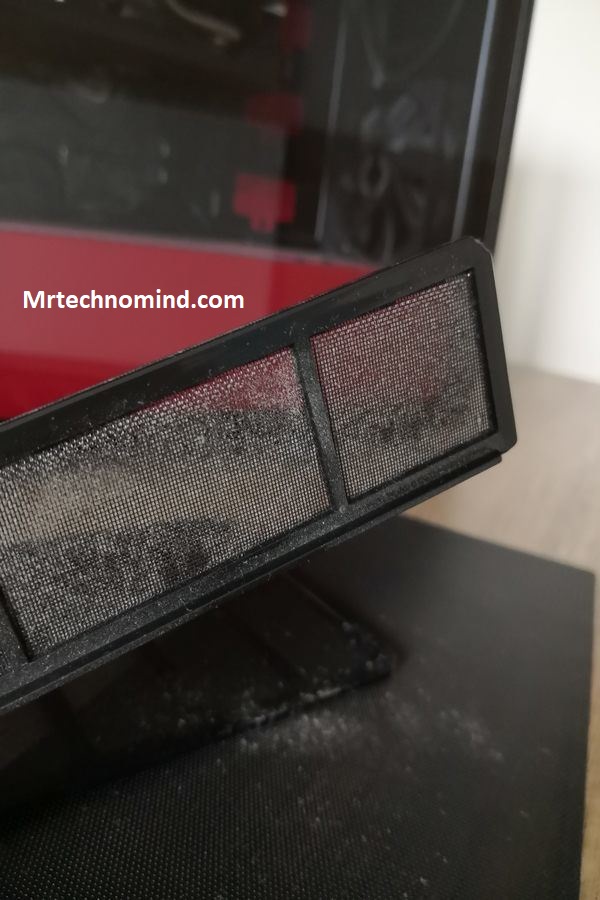
If you don’t clean your PC, you ask for a virus to waltz and throw a wild party in your hard drive.
Dust and debris accumulating inside your computer can block the airflow and cause it to overheat. This can lead to severe damage to your hardware components and even result in system crashes or permanent failure.
| Consequences of Not Cleaning Your PC | Description |
| Accumulation of Dust and Debris | Over time, dust and debris can accumulate inside your PC, particularly in the fans, vents, and heat sinks. This can impede airflow, cause overheating, and lead to system instability or failure. Regular cleaning helps maintain optimal cooling and prevents hardware damage. |
| Reduced Performance | When dust builds up on components like the CPU and GPU, it acts as an insulator, trapping heat and preventing efficient cooling. This can result in reduced performance, thermal throttling, and even system crashes. Cleaning can help restore proper cooling and maintain optimal performance. |
| Increased Noise Levels | Dust-filled fans tend to become noisier as they work harder to dissipate heat. If left uncleaned, the fans may accumulate more debris and become even louder. Regular cleaning keeps the fans clean and helps reduce noise levels, resulting in a quieter computing experience. |
| Risk of Hardware Failure | Excessive heat due to clogged cooling systems can strain hardware components such as the CPU, GPU, and hard drives, potentially leading to premature failure. Regular cleaning prevents overheating, extends the lifespan of your hardware, and reduces the risk of costly repairs or replacements. |
| Vulnerability to Malfunctions and Errors | Dust and debris can interfere with electrical connections and contacts, causing intermittent issues, error messages, and system crashes. Cleaning your PC helps maintain loyal relationships and reduces the chances of malfunctions, errors, and unexpected shutdowns. |
| Impact on Aesthetics and Longevity | Neglecting to clean your PC can result in a dirty and unattractive internal and external appearance. Additionally, regular cleaning helps preserve your PC’s longevity and resale value, ensuring it remains in good condition for an extended period. |
Additionally, a dirty PC can become a breeding ground for bacteria and dust mites, posing a health risk to you and your family. So, keeping your computer clean is about maintaining its performance, protecting your investment, and ensuring your well-being.
Neglecting to clean your PC can also impact its performance and slow down its overall speed. As dust accumulates on the internal components, such as the fans and heat sinks, they become less effective in dissipating heat. This can cause your computer to run hotter, leading to reduced performance and potential thermal throttling.
Furthermore, a dirty PC can affect the functionality of your peripherals, such as the keyboard and mouse, making your overall computing experience frustrating and less efficient. So, regular cleaning is essential to avoid these issues and keep your PC running smoothly.
Now that you know the potential consequences of not cleaning your PC, let’s move on to the next section and discuss how often you should clean your computer.
How Often Should You Clean Your Pc?
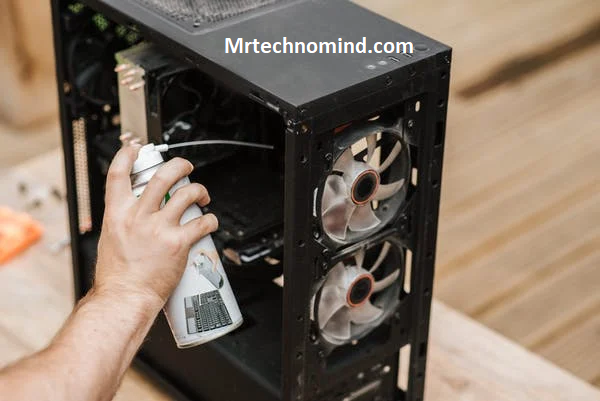
Maintaining your computer is crucial to ensure smooth performance and avoid potential headaches. When cleaning your PC, it’s essential to establish a regular schedule. While the frequency may vary depending on your usage and environment, a general guideline is to clean your PC at least once every three to six months. This will help prevent dust and dirt buildup, which can lead to overheating and other performance issues.
To give you an idea of what tasks you should include in your cleaning routine, here’s a table outlining some key areas to focus on:
| Area to Clean | Frequency |
| Dust filters | Once a month |
| Keyboard and mouse | Once a month |
| Monitor screen | Once a month |
| Internal components | Every three months |
| Cables and ports | Every six months |
Following a regular cleaning schedule ensures that your PC remains in optimal condition and continues to perform at its best. Now, let’s move on to the best way to clean your PC without causing any damage or disruption to its functionality.
Best Way to Clean Your Pc
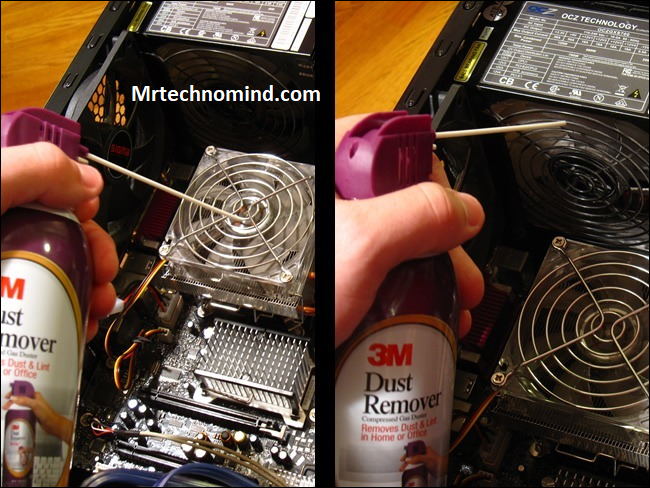
To keep your computer running smoothly, you’ll want to know the best way to clean it without causing any damage or disruption to its functionality. Did you know a study found that keyboards can have up to 20,000 times more bacteria than a toilet seat? It’s essential to regularly clean your computer to prevent the buildup of dust, dirt, and harmful bacteria.
| PC Cleaning Steps | Description |
| Prepare | Power off your PC and unplug it from the power source. Ensure you’re working in a well-ventilated area. Gather the necessary cleaning tools: compressed air, microfiber cloths, cotton swabs, isopropyl alcohol (at least 90% concentration), and a small brush or soft-bristle paintbrush. |
| Exterior Surfaces | Wipe down the exterior surfaces of your PC, including the case, using a microfiber cloth lightly dampened with a mixture of water and mild detergent. Avoid using excessive moisture, and be gentle to prevent scratching the surface. Dry the surfaces thoroughly with a clean, dry microfiber cloth. |
| Keyboard and Mouse | Use compressed air or a small brush to dislodge dust and debris between the keys for keyboards. Then, use cotton swabs lightly dampened with isopropyl alcohol to clean the keycaps and surrounding areas. For mice, wipe the exterior with a microfiber cloth dampened with water and mild detergent. Use cotton swabs lightly soaked with isopropyl alcohol to clean the buttons and crevices. Allow the keyboard and mouse to air dry before reconnecting them to the PC. |
| Monitor | Gently wipe the monitor screen with a microfiber cloth. You can dampen the cloth slightly with water or a specialized monitor cleaning solution if necessary. Avoid using excessive moisture and apply gentle pressure to prevent damaging the screen. |
| Fans and Vents | Compressed air blows away dust and debris from the fans and vents. Hold the fans in place while cleaning to prevent them from spinning uncontrollably. Ensure proper airflow by directing the compressed air through the ducts to dislodge accumulated dust. You can use a small brush to loosen stubborn dirt, followed by a blast of compressed air to remove it. Avoid vacuum cleaners as they can generate static electricity and potentially damage components. |
| Internal Components | Before working inside your PC, ground yourself by touching a grounded metal object or wearing an anti-static wrist strap. Compressed air removes dust from components such as the motherboard, graphics card, RAM modules, and power supply. Ensure the PC is entirely powered off and disconnected from the power source while cleaning the internal components. Avoid touching the sensitive electronic parts directly, and handle them by their edges or use an anti-static mat. |
| Thermal Paste (optional) | If you’re replacing a CPU cooler or notice high temperatures, you may need to reapply thermal paste. Remove the old thermal paste from the CPU and cooler using isopropyl alcohol and a lint-free cloth. Apply a small amount of fresh thermal paste to the centre of the CPU, reattach the cooler, and ensure proper mounting pressure. Refer to the CPU cooler manufacturer’s instructions for specific guidance. |
The best way to clean your PC is to start by shutting it down and unplugging it from the power source. Then, using a can of compressed air, gently blow away any dust or debris from the keyboard, vents, and other crevices. Next, use a microfiber cloth lightly dampened with water or a computer-safe cleaning solution to wipe down the screen, keyboard, and exterior surfaces. Remember to avoid using harsh chemicals or abrasive materials, as they can damage the delicate components of your computer.
By following these simple cleaning steps, you can ensure that your computer remains in optimal condition and free from any potential harm.
Now that you know the best way to clean your PC, it’s time to dive into a detailed cleaning guide. This guide will provide step-by-step instructions on thoroughly cleaning each computer component, ensuring every nook and cranny is free from dirt and dust.
So, let’s get started and make sure your computer stays in top-notch shape.
Cleaning Guide
When you start cleaning your computer, you’ll first want to gather all the necessary cleaning supplies. You’ll need a can of compressed air, a microfiber cloth, a soft brush, and some isopropyl alcohol. These supplies will help you effectively remove dust, dirt, and grime from your PC.
| PC Cleaning Guide |
| 1. Power off your PC and unplug it from the power source. |
| 2. Gather the necessary cleaning tools: compressed air, microfiber cloths, cotton swabs, isopropyl alcohol (at least 90% concentration), and a small brush or soft-bristle paintbrush. |
| 3. Start with the exterior surfaces: |
| – Wipe down the case using a microfiber cloth lightly dampened with water and mild detergent. |
| – Dry the surfaces thoroughly with a clean, dry microfiber cloth. |
| 4. Clean the keyboard and mouse: |
| – Use compressed air or a small brush to dislodge dust and debris between the keys. |
| – Use cotton swabs lightly dampened with isopropyl alcohol to clean the keycaps and surrounding areas of the keyboard. |
| – Wipe the mouse’s exterior with a microfiber cloth dampened with water and mild detergent. Use cotton swabs lightly soaked with isopropyl alcohol for the buttons and crevices. |
| – Allow the keyboard and mouse to air dry before reconnecting them to the PC. |
| 5. Clean the monitor: |
| – Gently wipe the monitor screen with a microfiber cloth. |
| – Lightly dampen the cloth with water or a specialized monitor cleaning solution if necessary. |
| – Apply gentle pressure while cleaning to avoid damaging the screen. |
| 6. Clean the fans and vents: |
| – Use compressed air to remove dust and debris from the fans and vents. |
| – Hold the fans in place while cleaning to prevent them from spinning uncontrollably. |
| – Direct the compressed air through the vents to dislodge any accumulated dust. |
| – Use a small brush to loosen stubborn dirt, followed by a blast of compressed air to remove it. |
| – Avoid using vacuum cleaners as they can generate static electricity and potentially damage components. |
| 7. Clean the internal components: |
| – Ground yourself by touching a grounded metal object or wearing an anti-static wrist strap before working inside the PC. |
| – Use compressed air to blow away dust from components such as the motherboard, graphics card, RAM modules, and power supply. |
| – Ensure the PC is entirely powered off and disconnected from the power source while cleaning the internal components. |
| – Avoid touching sensitive electronic parts directly and handle them by their edges or use an anti-static mat. |
| 8. Optional: Thermal paste (if necessary): |
| – If replacing a CPU cooler or experiencing high temperatures, remove the old thermal paste from the CPU and cooler using isopropyl alcohol and a lint-free cloth. |
| – Apply a small amount of fresh thermal paste to the centre of the CPU. |
| – Reattach the cooler, ensuring proper mounting pressure. Follow the CPU cooler manufacturer’s instructions for specific guidance. |
You can start cleaning your computer once you have your cleaning supplies ready. Begin by shutting down your PC and unplugging it from the power source. Use the can of compressed air to blow out any dust or debris from the vents, keyboard, and other hard-to-reach areas. Be careful not to hold the can too close to the components to avoid causing any damage. Next, gently use the soft brush to remove any remaining dust from the surfaces. Finally, dampen the microfiber cloth with isopropyl alcohol and use it to wipe down the exterior of your PC and the keyboard and mouse. This will help disinfect and remove any fingerprints or smudges.
To transition into the subsequent section about ‘how to clean a monitor?’ let’s move on to another critical component of your computer that requires regular cleaning: the monitor.
How to Clean a Monitor?
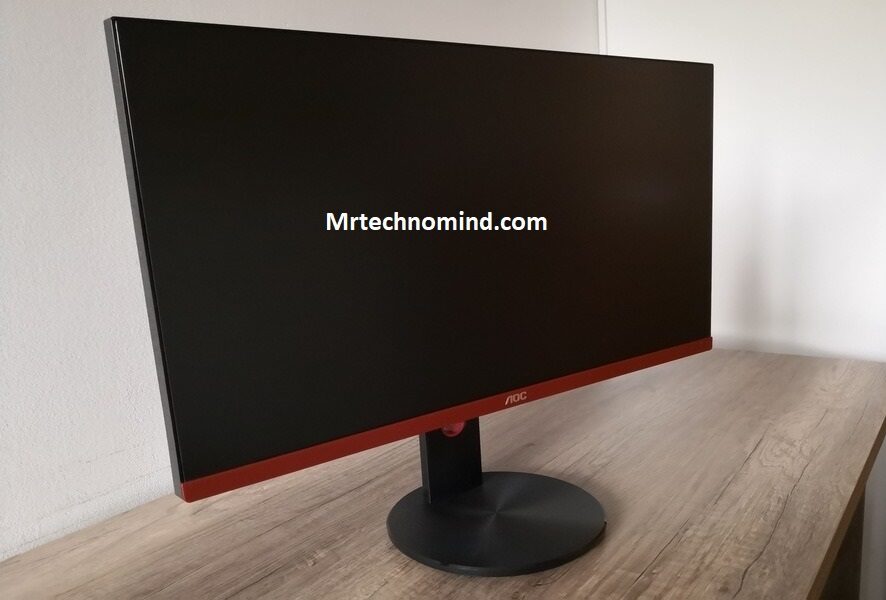
If you’re unsure how to clean a monitor, don’t worry – it’s a simple process that can easily be incorporated into your computer maintenance routine.
| Cleaning a Monitor |
| 1. Gather the necessary cleaning tools: microfiber cloth and a specialized monitor cleaning solution (optional). |
| 2. Power off the monitor and unplug it from the power source. |
| 3. If using a specialized monitor cleaning solution, follow the manufacturer’s instructions to prepare it. |
| 4. Lightly dampen a microfiber cloth with the cleaning solution or, if not using a cleaning solution, with water. |
| 5. Gently wipe the monitor screen in a circular motion, starting from the top and working your way down. |
| 6. Pay attention to any smudges or fingerprints and apply slightly more pressure to remove them. Be careful not to press too hard to avoid damaging the screen. |
| 7. For stubborn stains or marks, avoid using excessive force. Instead, dampen the cloth or try using a specialized monitor cleaning solution. |
| 8. Avoid spraying any liquids directly onto the monitor. Instead, apply the cleaning solution or water to the cloth and wipe the screen. |
| 9. After cleaning, dry microfiber cloth removes any remaining moisture and leaves the screen completely dry. |
| 10. Do not use paper towels, regular cloth, or abrasive materials as they can scratch or damage the monitor surface. Stick to soft, lint-free microfiber cloths for cleaning. |
| 11. Once the monitor is completely dry, plug it back into the power source and power it on. |
| 12. Repeat the cleaning process as needed, depending on the dirt or smudges on the monitor. |
Keeping your monitor clean not only improves its appearance but it also helps to prevent dust and debris from causing damage or affecting your viewing experience.
To clean your monitor effectively, follow these simple steps:
– Start by turning off your monitor and disconnecting it from the power source. This ensures your safety and prevents any potential damage to the screen.
– Gently wipe the screen with a soft, lint-free cloth. Avoid using paper towels or rough materials that can scratch the surface. You can also use a screen cleaning solution specifically designed for monitors, but apply it to the cloth and not directly onto the screen.
– Pay attention to the corners and edges of the screen, as these areas accumulate more dust. Use a soft brush or a cotton swab dipped in the screen cleaning solution to remove stubborn dirt.
Following these simple steps, you can keep your monitor clean and free from dust and debris.
Now, let’s move on to the next section about how to clean your keyboard without any hassle.
How to Clean Keyboard?
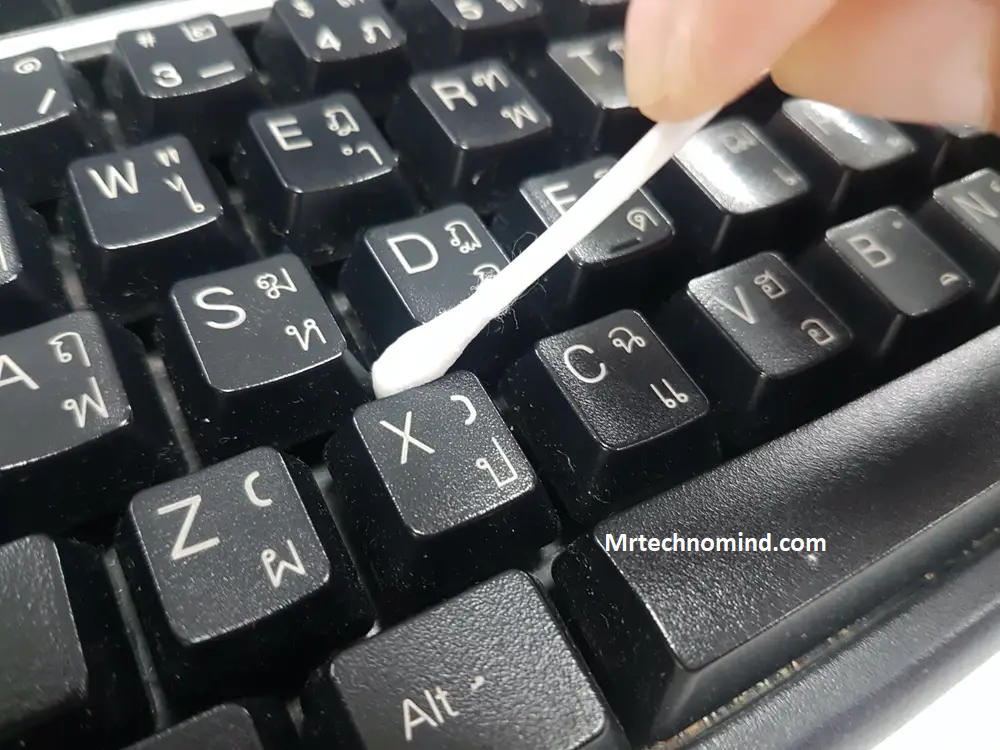
Keeping your keyboard clean is essential for optimal performance and longevity. Over time, dust, crumbs, and other debris can accumulate between the keys, causing them to stick or not register properly when pressed.
| Cleaning a Keyboard |
| 1. Power off your computer and unplug the keyboard from the computer or disconnect it from any wireless connections. |
| 2. Gather the necessary cleaning tools: compressed air, a small brush, cotton swabs, isopropyl alcohol (at least 90% concentration), and a cloth. |
| 3. Turn the keyboard upside down and gently shake it to dislodge any loose debris or crumbs. |
| 4. Use compressed air to blow out any remaining debris between the keys and other hard-to-reach areas. |
| 5. Dampen a cloth with a mixture of isopropyl alcohol and water, or use a specialized electronics cleaning solution. |
| 6. Wipe the surface of the keys and the keyboard casing, applying gentle pressure to remove any dirt or grime. |
| 7. For stubborn stains or residues, dampen a cotton swab with isopropyl alcohol and gently scrub the affected areas. |
| 8. Pay extra attention to the areas around the keycaps and the spaces between them. |
| 9. Allow the keyboard to air dry or use a dry cloth to remove any remaining moisture. |
| 10. If desired, you can use keycap pullers (if available) to remove individual keycaps for a more thorough cleaning. |
| 11. Clean the keycaps separately by wiping them with a cloth dampened with isopropyl alcohol. |
| 12. Once the keyboard and keycaps are completely dry, reassemble the keycaps and reconnect the keyboard to your computer. |
| 13. Power on your computer and test the keyboard to ensure all keys function correctly. |
To clean your keyboard, start by shutting down your computer and unplugging the keyboard. Turn it upside down and lightly shake it to dislodge any loose debris.
Next, take a can of compressed air and carefully blow between the keys to remove any remaining dust or particles. You can use a soft, lint-free cloth slightly dampened with water and mild detergent for more stubborn dirt.
When cleaning the keys, it’s essential to be gentle to avoid causing any damage. Use a cotton swab dipped in isopropyl alcohol to clean the keys and remove any grime or sticky residue. Be sure to wring out any excess liquid from the swab before using it on the keys to prevent moisture from seeping into the keyboard.
Additionally, avoid using excessive force or abrasive cleaners, as they can scratch the keys or remove the lettering.
Once you have finished cleaning, allow the keyboard to dry completely before plugging it back in and turning on your computer.
Regularly cleaning your keyboard can maintain functionality and prevent any potential issues from dirt or debris buildup.
Frequently Asked Questions
1. Can Not Clean My Pc Lead to Hardware Damage?
Not cleaning your PC regularly can lead to hardware damage. Dust buildup can cause overheating, damaging components like the CPU and GPU. Cleaning your PC helps prevent these issues and keeps it running smoothly.
2. What Are Some Signs That Indicate My Pc Needs Cleaning?
Some signs that indicate your PC needs cleaning include overheating, loud fan noises, slow performance, frequent crashes, and dust buildup on the external ports or inside the case.
3. How Can a Dirty Pc Affect Its Overall Performance?
A dirty PC can significantly slow down its overall performance. Research shows that dust accumulation can cause a 30% decrease in airflow, leading to overheating and potential damage to your computer components.
4. Are There Any Risks Associated With Cleaning a Pc?
Yes, there are risks associated with cleaning a PC. Mishandling components, improper cleaning methods, or static electricity can cause damage to the computer and its parts.
5. Should I Clean My Pc Myself or Hire a Professional?
You should clean your PC yourself or hire a professional. Keeping your computer from dust and debris is essential to prevent potential issues.
Conclusion
In conclusion, neglecting to clean your PC can lead to many issues that can be easily avoided. Dust and debris build-up can cause your computer to overheat, resulting in decreased performance and potential hardware failure. Additionally, a dirty keyboard and monitor can harbour germs and bacteria, posing a health risk to you and those around you.
Cleaning your PC at least once every few months is recommended to keep it running smoothly. By cleaning your computer correctly, you can prevent big problems down the line and extend its lifespan.
Now, you might wonder, what’s the best way to clean your PC? Well, it’s pretty simple. Start by shutting down your computer and unplugging it from the power source. Use a soft, lint-free cloth to gently wipe down the exterior of your PC, removing any visible dust or smudges.
Next, open up your computer’s case and carefully use compressed air to blow away any dust that may have accumulated on the internal components. Be sure to pay extra attention to the fans and vents, as these areas collect the most dust.
When cleaning your monitor, avoid using harsh chemicals or abrasive materials that could damage the screen. Instead, lightly dampen a microfiber cloth with water or a screen cleaner specifically designed for monitors, and gently wipe the screen in a circular motion.
As for your keyboard, turn it upside down and gently shake it to dislodge any loose debris. Then, use compressed air to blow away any remaining dust between the keys. For a more thorough clean, you can use a small brush or cotton swabs dipped in isopropyl alcohol to remove stubborn stains or sticky residue.
By following these simple cleaning techniques, you can ensure that your PC remains in optimal condition and avoid potential problems. So, don’t let dust and grime accumulate – take the time to clean your PC regularly and enjoy a smoother, healthier computing experience.